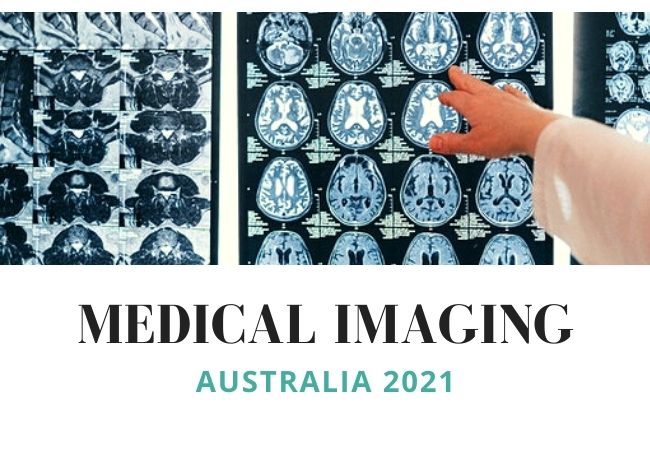
Interested in Health Science but you are also a Technology geek? It’s time for you to consider taking a degree in Medical Imaging.
In conjunction with that, you might be familiar with the medical terms, X-ray, CT scan or MRI. For every medical checkup, we are often required to include an X-ray of our body: which is the image of our body on the inside, or if you happen to witness a pregnant woman going for a CT scan to monitor the baby’s condition from time to time — this is where medical imaging comes into the picture.
What is Medical Imaging?
In simple words, Medical Imaging is the process of creating visual representations of the interior of a body for the purpose of analysis and interpretation. It is often used to reveal internal structures of the body to diagnose and treat diseases.
What are the Most Common Types of Medical Imaging?
- X-Rays – The most common medical imaging, X-Ray. X-rays display images of the interior of the body. It is commonly used to diagnose breaks in the bones.
- Magnetic Resonance Imaging (MRI) – Next, Magnetic Resonance Imaging, or also known as an MRI, it creates highly detailed images of the organs and the tissues inside the body.
- Computerized Tomography (CT Scan) – On the other hand, Computerized Tomography, utilises a series of X-ray images, which are taken from various angles and uses computer processing to create cross-sectional images of various structures within the body to diagnose and treat diseases.
Why study Medical Imaging?
- Important in the healthcare industry – As we all know, medical imaging has changed the face of the healthcare industry and allowed practitioners and scientists to learn more about the human body. It is clearly an essential tool for physicians to assist with diagnostics, treatment, and prevention.
- Enhance your people skills – Your patients will come from different kinds of people, from teenagers to adults and senior citizens. You will get the chance to know your patients particularly well because you see them regularly through their treatment duration and in post-treatment or follow-up stages of care.
- Work with technology – While technology continues to rapidly grow, we will see advancement in medical imaging technology as well. With the help of technology, medical imaging will continue to help with earlier detection of health issues, treatment, and preventative care.
What are the Career Opportunities if I study Medical Imaging?
- Radiation therapist: You will work closely with radiologists to prescribe and administer radiation therapy, often for the treatment of cancer.
- Diagnostic Medical Sonographer: Also known as ultrasound technicians, you will use devices that emit high frequency sound waves to produce images of unborn fetuses, internal organs, tissues, and muscles.
- Nuclear Medicine Technologist: You will be working with a supervising physician to administer radioactive compounds, which is called radiopharmaceuticals.
These are not all! There are a lot more interesting careers for you in Medical Imaging. Talk to us to learn more!
What are the General Entry Requirements to study Medical Imaging in Australia?
Academic Requirements
SPM (Prerequisite) | Pass in Mathematics and Physics |
STPM/Matriculation | Minimum CGPA of 3.33 |
A-Level | Minimum aggregate score of 10 (total of 3 best subjects) |
UEC | Minimum grade average of 2.4 (total of 5 best subjects) |
International Baccalaureate (IB) | Minimum 37 points |
*The requirements may vary among universities, for inquiries on other entry requirements, contact Excel Education.
English Language requirements
IELTS | Minimum 7.0 |
TOEFL | Minimum overall 94 (Internet Based Test) |
PTE | Minimum 65 |
*The requirements may vary among universities, for inquiries on other English Language requirements, contact Excel Education.
Which are the Top Universities to study Medical Imaging in Australia? (Accredited by Medical Radiation Practice Board Australia)
1. University of Sydney
Program Name | Bachelor of Applied Science (Diagnostic Radiography) |
Program Duration | 4 years |
Intakes | March |
Indicative Annual Fee | AUD$53,000 |
2. Monash University
Program Name | Bachelor of Radiography and Medical Imaging (Honours) |
Program Duration | 4 years |
Intakes | February |
Indicative Annual Fee | AUD$46,900 |
3. University of Newcastle (UON)
Program Name | Bachelor of Medical Radiation (Honours) (Diagnostic Radiography) |
Program Duration | 4 years |
Intakes | February |
Indicative Annual Fee | AUD$34,030 |
4. Queensland University of Technology (QUT)
Program Name | Bachelor of Medical Imaging (Honours) |
Program Duration | 4 years |
Intakes | February |
Indicative Annual Fee | AUD$34,600 |
5. Deakin University
Program Name | Bachelor of Medical Imaging |
Program Duration | 4 years |
Intakes | February |
Indicative Annual Fee | AUD$38,400 |
6. University of South Australia (UniSA)
Program Name | Bachelor of Medical Radiation Science (Medical Imaging) |
Program Duration | 4 years |
Intakes | February |
Indicative Annual Fee | AUD$39,700 |
7. Curtin University of Technology
Program Name | Bachelor of Science (Medical Radiation Science) |
Program Duration | 4 years |
Intakes | February, July |
Indicative Annual Fee | AUD$36,100 |
8. Charles Sturt University
Program Name | Bachelor of Medical Radiation Science (with specialisations) |
Program Duration | 4 years |
Intakes | March, June |
Indicative Annual Fee | AUD$31,200 |
Contact us to find out more!
Student enquiries:
Call/Whatsapp: +60182414802
Email: [email protected]
For more stories like this, join the Excel Education community on Facebook
Need help with your uni application? Connect with us here

Heather
I seek peace and knowledge in discovering myself.

